
Browse our fun-packed, helpful plant-based articles, and delve deeper into this healthy, sustainable lifestyle!


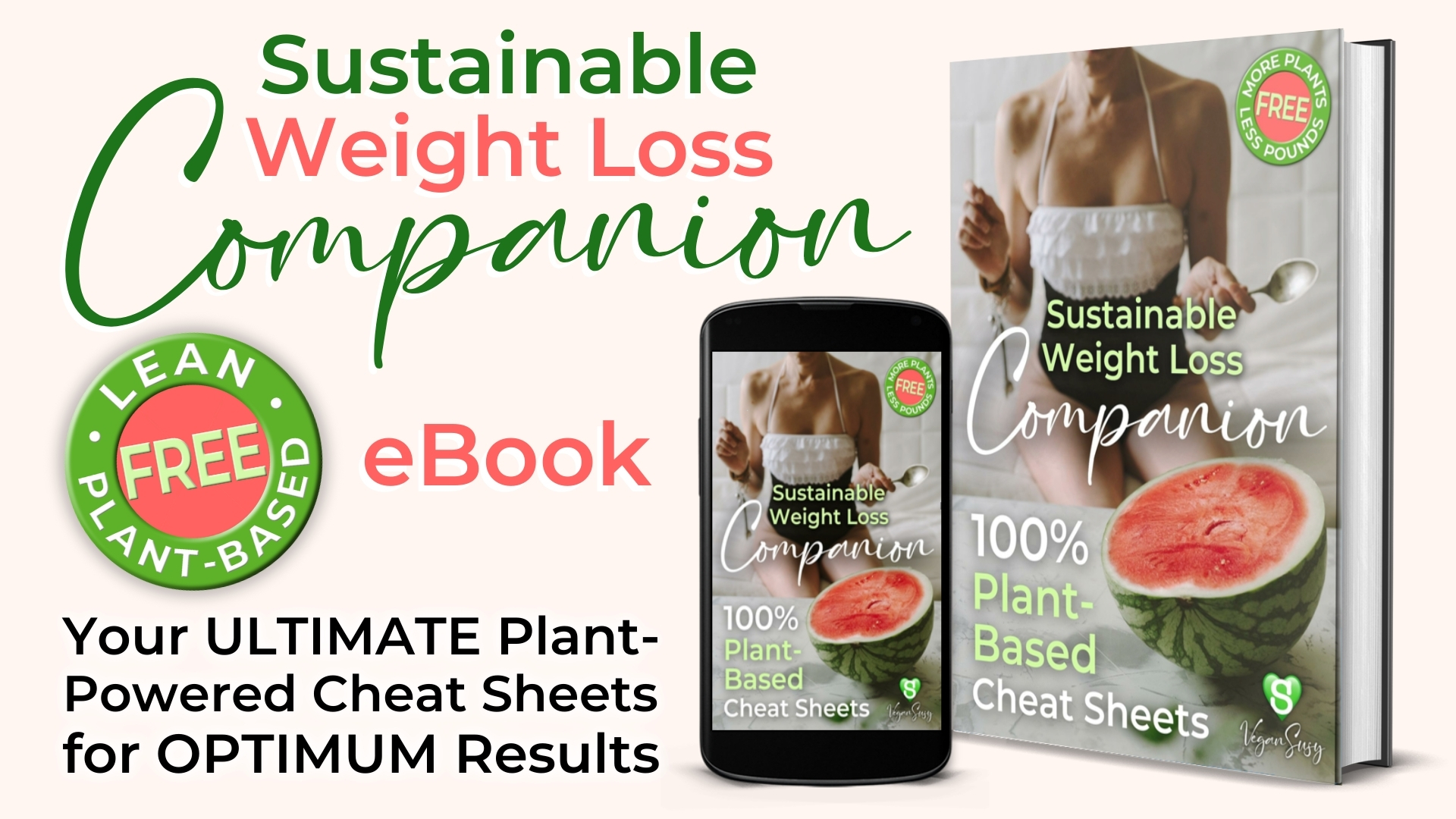

Stock Up Smart: Essential Vegan Grocery List for Beginners
Plant-Based Lifestyle Tips For Women
Author: Plant-Based Susy
Let Our Guidelines Inspire Your Own List
It’s predicted that 6.4 million Brits plan to go vegan in 2024. If you're one of the millions who's just moved to plant-based living, welcome! The animals and planet are delighted by your choice, and you’ll likely be rewarded with a body that looks and feels better.
But only if you eat a varied, well-balanced diet abundant in whole foods. And that takes planning. Let’s start with a breakdown of vegan grocery list essentials to get all the nutrients you’ll need.
Vegan grocery list essentials for a well-balanced diet include various fruit and vegetables, whole grains, beans, peas and lentils, nuts and seeds, soya products and seitan, plant milks, spirulina, nutritional yeast, herbs and spices, and plant-based condiments.
When you drop meat, fish, chicken, eggs, and dairy from your meals, it becomes trickier to cover your nutritional needs without supplements. We’ve chosen our list to simplify balanced plant-powered eating.
Let our guidelines inspire your own list of plants to fill your fridge, freezer, and pantry, and create health-boosting meals and snacks.
These are Vegan Susy-approved must-haves for well-balanced plant-based eating.
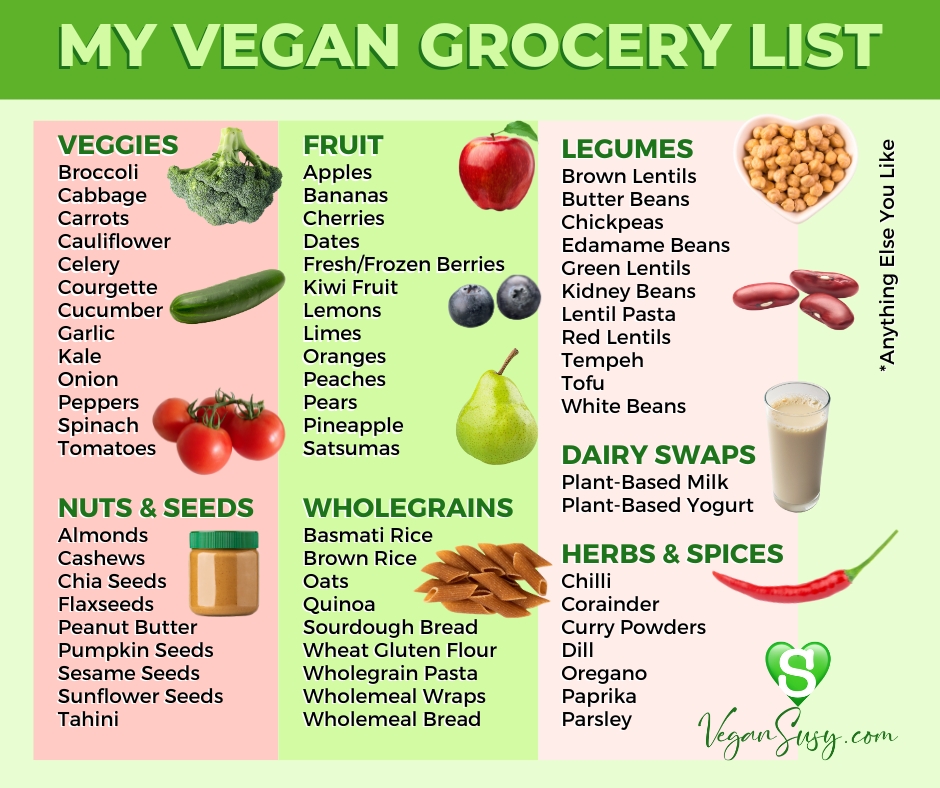
Table of Contents:
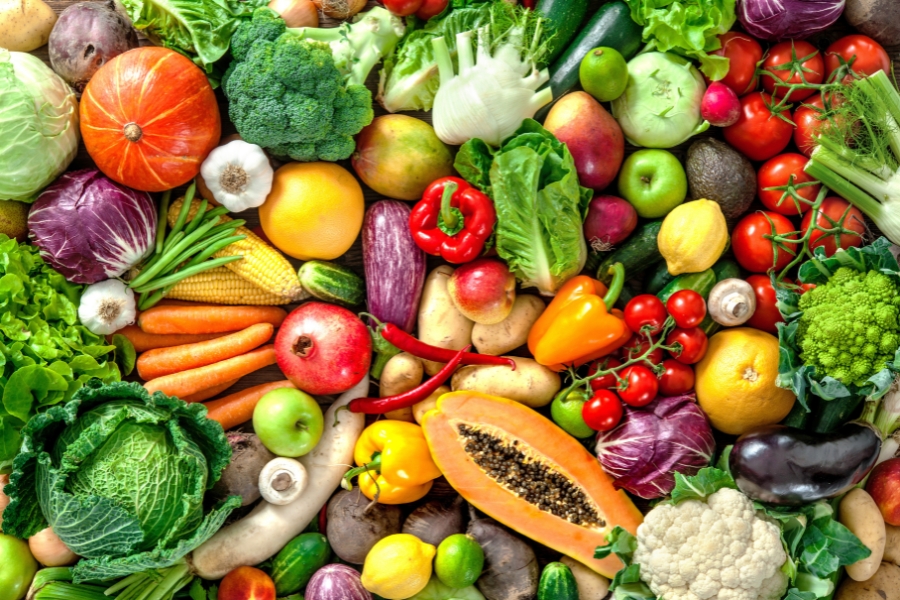
"Eat
the
Rainbow!"
Fruit and Vegetables
Load fresh produce into your trolley! Fruit and veggies are the stars of healthy vegan and whole food plant-based diets.
Select what you like from the produce aisle. All fruit and veg have vitamins, minerals, and antioxidants to fight disease and give you a healthy glow. But ensure you get plants in assorted colours to maximise nutrition.
The compounds that make fruit and veg colourful also give them health benefits. Each colour comes with a different perk. (If you were wondering, the more vibrant the fresh produce, the more goodness it holds.)
Red, Yellow, and Orange are super sources of vitamins C and A, potassium, and antioxidants to boost immunity and look after your eyesight.
White enhances heart health and help control cholesterol.
Green gives you potassium, vitamin K, and antioxidants to help blood clot and keep eyes, heart, and bones in good condition.
Blue and purple help you age well.
Vegan Susy’s Favourites
Apples for snacking, baking, or making into homemade applesauce.
Aubergines (Eggplants) for grilling and baking.
Bell peppers for roasting, stuffing, stir-fries, or adding crunch and colour to salads.
Carrot, cucumber, celery, cherry tomatoes, mini corn and peppers for raw dipping.
Bananas to replace eggs in many baking recipes, thicken smoothies, and turn into “nice cream” (blitzed frozen bananas and berries, peanut butter, or cocoa power), or a healthy portable snack in its own packaging!
Courgette (Zucchini) for spiralizing into veggie pasta (or courgetti).
Cauliflower for roasting and making into low-carb cauli-rice and pizza bases. It’s also one of the top plant sources of choline, needed for liver, brain, and nervous system health.
Fresh berries such as strawberries, raspberries, or blueberries for adding sweetness and antioxidants to breakfast bowls, desserts, or snacks.
Frozen berries for eye-catching pink, antioxidant-charged smoothies.
Dark leafy greens are a calcium- and iron-rich base for our daily salads.
Broccoli-packed meals always make us feel we’re showing our bodies love. Strong research backs up this tree-like veggie’s health benefits. A recent Antibiotics study concluded it's a power veg with "anti-inflammatory, antioxidant, anti-cancer, and potentially antibacterial effects”. Pile it up on your plate!
Spinach for adding to salads, smoothies, or cooked dishes like stir-fries and pasta.
Potatoes and sweet potatoes for baking, roasting, or mashing into creamy purees.
Dried fruit to sweeten up homemade trail mix, granola, and energy balls (we stick to small helpings, so we don’t blow our calorie budget). Bone-protecting prunes are another fruit we bake with all the time. They’re marvellous stand-ins for eggs and butter and create magic with warming spices.
Dried porcini mushrooms give dishes a deep, umami flavour.
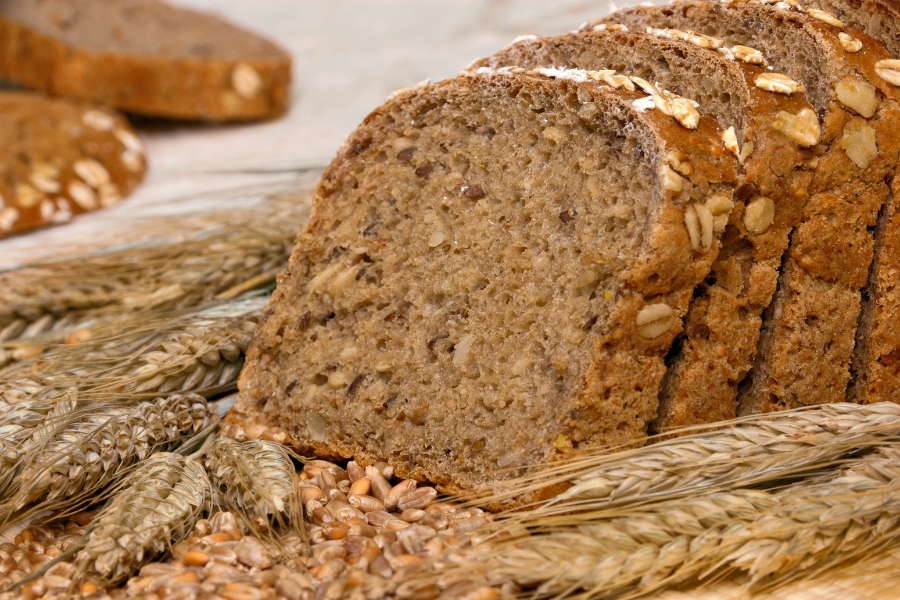
Whole Grains
Whole grains are vegan grocery list essentials because they make meals substantial. They’re also packed with complex carbs for lasting energy, fibre, iron, B vitamins, magnesium, phosphorus, zinc, and selenium.
Everyone knows oats and rice. But what about amaranth, farro, freekeh, and teff? New vegans have vast fields of unusual whole grains to explore!
Dig into creative ways to prepare the grains as you get familiar with their flavours and textures. Some work magic with nuts and fruit for breakfast, others are better in salads, soups, and stews, and they all give veggie patties a lovely chewy texture.
We cook big batches twice weekly and keep leftovers in the fridge (they stay fresh for about 3 days). These meal prep hacks make weekday eating a breeze. Whole-grain pasta and bread are also on our go-to list for quick lunches.
Vegan Susy’s Favourites
Oats for 3-ingredient Sunday pancakes — blitz with oat milk and banana to make the batter. We think they’re dreamy with our homemade caramel sauce.
Spelt, Teff, Amaranth, and Quinoa for their excellent protein content. These are the grains our ancient ancestors ate. Try popping amaranth like popcorn or soaking teff in water overnight for a readymade porridge in the morning.
Ezekiel bread is a loaf of sprouted (to boost nutrition) whole grains and legumes that pairs mouth-wateringly with hummus or avocado.
Bulgur wheat cooks quickly for a fresh-flavoured and convenient tabbouleh whenever the craving strikes.
Rice: Black, brown, red, white, wild, Arborio (risotto), Basmati, Thai jasmine, you name the rice – we love 'em all.
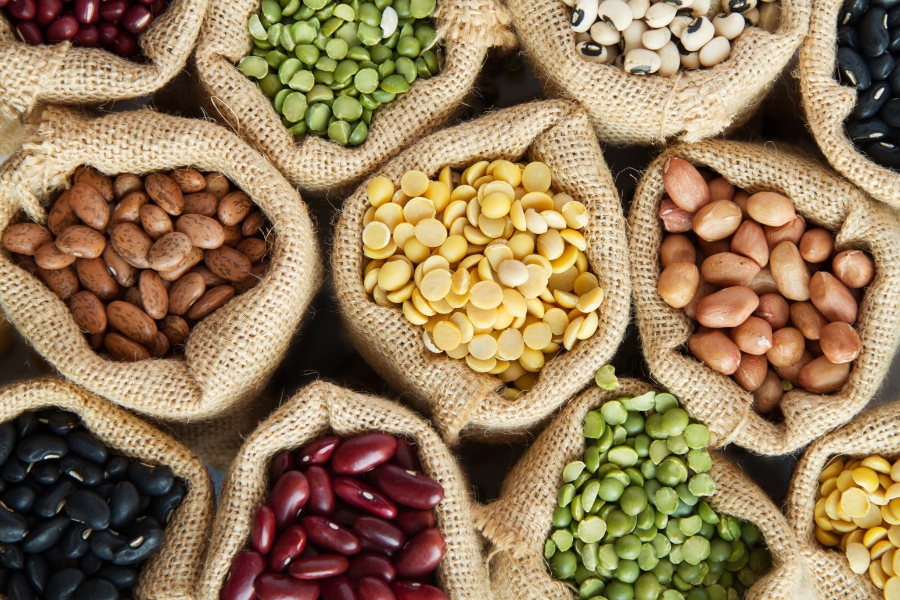
Beans, Peas, and Lentils
No plant-based grocery list is complete without various pulses. They deserve a spot in your pantry because of their wow nutritional breakdown, including protein, fibre, disease-fighting phytochemicals, iron, calcium, zinc, potassium, and slow-digesting (read: filling) carbs.
Lentils, peas, and beans have a mild flavour enhanced by any seasoning. They're lovely mixed with veggies in salads — try multiple beans with diced bell peppers and tangy honey-mustard and garlic dressing.
Their texture makes them perfect for mashing and shaping into falafel balls and veggie burgers. And they’re also spot-on for blending into thick, satisfying dips. Once you get started, you’ll see how easy it is to prepare them differently every day of the week.
Vegan Susy’s Favourites
Lentil mash combines with whole grains, sauteed onion, and seasoning and bakes into a tasty (not)meatloaf. Another hack we love when baking is swapping out half of the fat with pureed lentils — you get moist brownies and muffins with fewer calories. Lentils are the stars in all the Indian cuisine inspired dals – we like ours on the lighter, too; not swimming in oil like most restaurant versions.
Chickpeas for classic hummus to enliven even blah or meh flavours. Our go-to ways to use it are thinned with lemon juice into a bright dressing for grain salads or slathered on cauliflower pizza bases, topped with sliced sundried tomato and olives. Garbanzo beans are also great for making "Cheeky Chuna" (vegan tuna).
Black beans: Versatile legumes with a rich, earthy flavour and a creamy texture. They are commonly used in Latin American cuisine, such as black bean soup, tacos, burritos, and salads. Black beans are an excellent source of protein, fibre, folate, and minerals like iron and magnesium.
Red Kidney beans: Large, kidney-shaped legumes that are popular in chilli, soups, stews, and bean salads. They have a robust flavour and a firm texture, making them ideal for hearty dishes. Kidney beans are packed with protein, fibre, vitamins, and minerals, including folate, iron, and potassium.
Cannellini beans: Also known as white kidney beans, are creamy-white legumes with a mild flavor and a smooth texture. They are often used in Italian cuisine, such as minestrone soup, pasta e fagioli, and bean salads. Cannellini beans are rich in protein, fibre, and nutrients like folate, manganese, and magnesium.
Pinto beans: Versatile, nutrient-rich and great for all our favourite and much-loved Mexican-inspired dishes.
Frozen green peas, so we always have these protein-packed gems on hand.
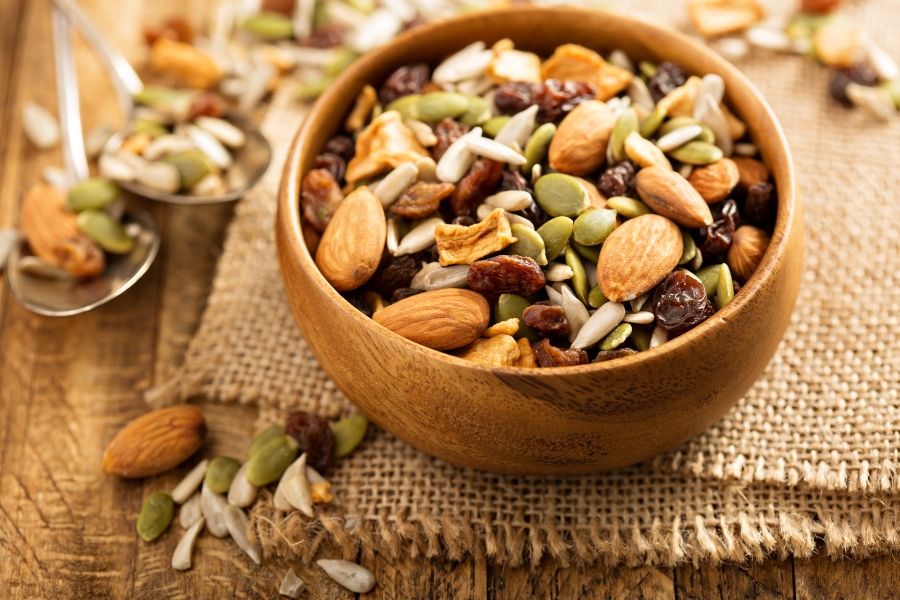
Nuts and Seeds
Nuts, seeds, peanuts, and their butters are must-have vegan staples for your pantry. They help you reach your protein target (with 6 g on average in a small handful), contain plenty of good fats to keep you fuller for longer, and feed you nutrients to make your whole body work better.
They’re also impressive dairy taste-a-likes. Blitz in a high-speed blender to create butter, soak in water before blitzing to make cream, and whizz with water to get milk. (Or buy the readymade versions if you don’t have the blender or motivation to make your own.)
Nuts and seeds are nutrient-rich protein powerhouses, packed with healthy fats, and as such they are relatively high in calories per pound. A small handful is all you need to nourish yourself and keep your daily calories in check. Avoid all nuts with added oils.
Vegan Susy’s Favourites
Hemp seeds are rich in high-quality protein, with double the protein of some other seeds (30g packs more than an egg).
Flaxseeds are the top food source of lignan antioxidants for heart health and cancer prevention.
Chia seeds are another winner for high-quality protein. They also soak up liquid and swell to become a great egg substitute (1 tablespoon mixed with ¼ cup water = 1 egg) or a breakfast that tastes like pudding.
Sesame seeds have a decent amount of calcium. They become rich, creamy tahini when toasted and ground. We keep both within reach when making meals and snacks.
Sunflower seeds are rich in healthy fats, protein, fibre, vitamins, and minerals. They add a crunchy texture and nutty flavor to salads, baked goods, and snacks. Sunflower seeds are also a good source of vitamin E, an antioxidant that helps protect cells from damage.
Almonds have a generous dose of vitamin E for a healthier heart and gut. They’re also recipe all-rounders and can even become a mildly sweet, nutty flour that adds extra deliciousness to cookies and cakes.
Walnuts have the most omega-3 fatty acids of all nuts. These heart and brain boosters can be tricky to find in plant foods, so we add these nuts to our breakfast bowls and snacks daily.
Cashews are the secret ingredient behind our Super Tasty Vegan Mushroom Stroganoff's creaminess. They’ve also got vitamin K and magnesium.
Pistachios are nutrient-dense nuts, rich in protein, fibre, healthy fats, vitamins, and minerals, including vitamin B6, potassium, and magnesium. Pistachios make a delicious and satisfying snack on their own or can be used in various recipes, such as salads, desserts, and pesto.
Peanuts are the frugal vegan’s go-to nut for a protein kick (7 g in a small handful).

Minimally Processed Meat Alternatives
Soya products and seitan are musts for everyone wanting meals with a protein punch. Not only are these plant-based meat alternatives packed with up to 27 g of protein per 100 g, but they also provide a dose of calcium, making them valuable additions to a balanced vegan or plant-based diet.
These foods boast a meaty texture that makes transitioning from animal to plant-based eating easier for many people. Whether you're craving the savoury satisfaction of meat in your favourite dishes or looking for versatile ingredients to experiment with in the kitchen, soya products and seitan deliver.
They excel in replacing meat, fish, and chicken in a variety of dishes, from kebabs and stews to gyros and tacos. Their ability to mimic the taste and texture of meat allows them to seamlessly integrate into traditional recipes, offering a satisfying alternative for both vegans and omnivores alike.
Soya products and seitan shine in creating stir-fries, fajitas, and chilli, infusing these dishes with enough umami flavour to impress even the most discerning palates. Whether you're cooking for yourself or hosting friends and family, these meat alternatives offer endless possibilities for flavourful and satisfying meals.
Vegan Susy’s Favourites
Tofu is a versatile ingredient that can be used in a wide range of dishes, from savoury to sweet. It makes marvellous tortillas, quiches, and scrambles, offering a plant-based alternative to traditional egg-based dishes. Additionally, tofu can be transformed into a convincing “cheesecake” or silky smooth chocolate mousse, making it a go-to ingredient for satisfying, protein-rich, low-fat desserts.
Tempeh, a fermented soybean product, offers a unique texture and flavour that works well in recipes calling for fish. Its firm texture and nutty taste make it a versatile ingredient for stir-fries, sandwiches, and salads, providing a protein-packed option for those seeking variety in their plant-based meals.
Seitan, also known as wheat gluten, is a protein-rich product with a texture similar to chicken. Its chewy texture and ability to absorb flavours make it an excellent choice for dishes such as stir-fries, curries, and sandwiches. Whether you're craving a hearty meal or looking to add protein to your favorite recipes, seitan is a versatile option that delivers on taste and texture.
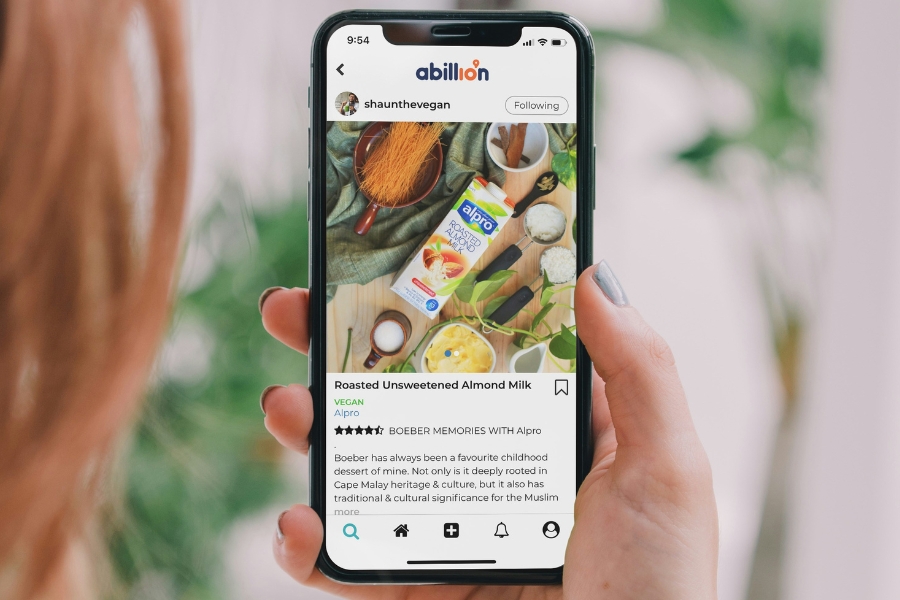
Plant-Based Dairy Alternatives
Who knew how many plants could become milk? Soya, almond, oat, and coconut are the most popular. But you'll also find rice, hemp, hazelnut, macadamia, cashew, pea, and even potato milk.
Calcium-fortified plant milks can fill the gap in vegan and plant-based diets lacking this micronutrient. Bonus points for varieties with added vitamins B12 and D too.
In addition to milk, there are also plant-based alternatives to yogurt and cheese. Vegan yogurt options include coconut, almond, soy, and oat-based varieties, which come in various flavours and textures similar to traditional dairy yogurt.
Plant-based cheeses made from nuts (like cashews and almonds), soya, or coconut oil offer a range of tastes and textures, from creamy to sharp, and are perfect for topping pizzas, sandwiches, or enjoying on their own.
After tasting and recipe testing every plant-based milk available, these are the ones we like the best:
Vegan Susy’s Favourites
Soya milk’s protein content comes out on top.
Oat milk’s creaminess and thick texture can’t be rivalled.
Almond milk works great in overnight oats and chia seed pudding.
Coconut yogurt adds a creamy texture to smoothie bowls and desserts.
Cashew cheese spreads beautifully on crackers or melts into gooey goodness in vegan mac 'n' cheese and on pizza.

Wonder Powders
Spirulina and nutritional yeast boast nutrients that make them two more essentials for your vegan grocery list.
Spirulina (a type of algae) is crammed so full of goodness that researchers swear it’s a superfood. Its antioxidant, essential fatty acid, and amino acid profile (better than any other plant’s) make it stand out.
Nutritional yeast also has lots going for it. This deactivated yeast, called nooch by those who love it, has lots of protein (about 5 g per tablespoon), fibre, and B vitamins including B12.
It has a special spot in our hearts because it creates a creamy, cheesy sauce for the ultimate comfort eating (mix it with mashed white beans, oat milk, and mustard to see what we mean).
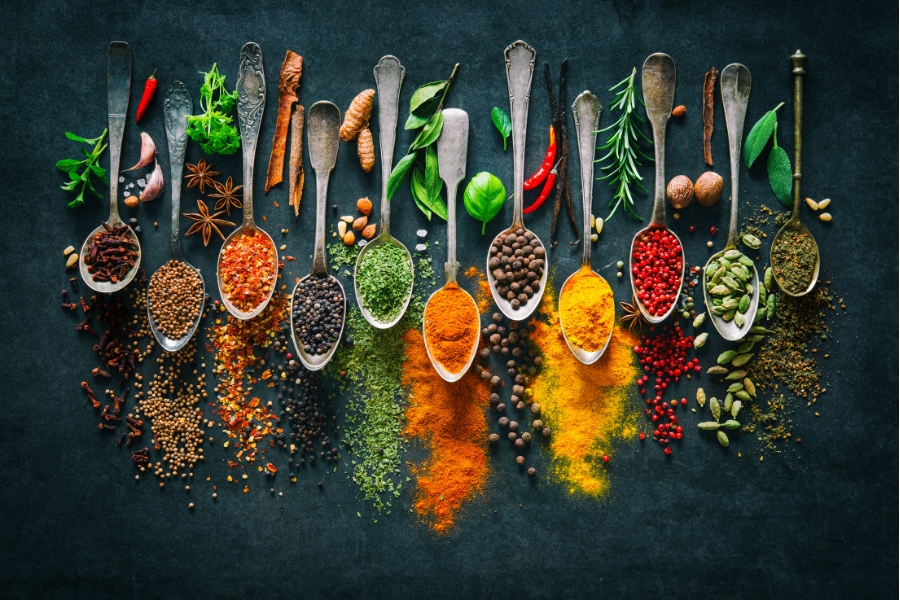
Herbs and Spices
You’re unlikely to eat enough herbs and spices to get much nutrition. Still, you'll intensify your meals’ flavor and color by sprinkling something spicy or aromatic.
These seasoning heroes are different parts of plants. Herbs are leaves, while spices are bark, berries, buds, roots, and seeds. Fresh does the job just as well as dried. If you go for fresh, chop them finely to release max flavour.
Experimenting with herbs and spices can transform a simple dish into a culinary masterpiece. From aromatic basil and oregano to bold cumin and smoked paprika, there's a wide range of flavours to explore.
Don't be afraid to mix and match different herbs and spices to create unique flavour profiles in your dishes.
These are our herb and spice picks for full-flavored food:
Vegan Susy’s Favourites
Cinnamon, allspice, and ginger for sweetness.
Mint, basil, and oregano for versatility and extra oomph.
Coriander (cilantro), chilli, cumin, cloves, and star anise for Mexican style.
Turmeric, chilli, cumin, and coriander (cilantro) for vibrant Indian-inspired dishes.
Parsley, sage, rosemary and thyme, for earthy flavours in roasted vegetables or savoury dishes.

Baking Staples
Plant-based baking differs from the standard in that it doesn’t include eggs and butter but packs in nutrient-dense ingredients. Some vegan and plant-based bakers keep honey and refined sugar out of their recipes, too.
When it comes to baking staples, there are plenty of vegan alternatives to traditional ingredients. For example, apple purée, mashed banana, or flaxseed meal can replace eggs in recipes, while coconut oil, nut butters, or avocado can stand in for butter.
Alternative flours like almond flour, coconut flour, or chickpea flour offer nutritious options for baking, providing extra fibre and protein compared to refined white flour.
We’ve found that these ingredients make vegan baking turn out just right every time:
Vegan Susy’s Favourites
Apple purée, coconut and olive oils, nut and seed butters, and mashed banana or avocado can replace butter.
Chickpea liquid (aquafaba), soaked chia seeds or flaxseeds, mashed banana, silken tofu, and pumpkin or apple purée can take eggs’ place.
Nut flour, whole-grain flour, coconut flour, and chickpea flour are nutritious alternatives to white flour.
Dates, bananas, apple purée, coconut sugar, maple syrup, and agave syrup make baked goods sweet without honey or sugar.
Vanilla extract, cocoa powder, and vegan chocolate chips add delicious flavor to cookies, brownies, and cakes.

Condiments
Condiments play an essential role in enhancing the flavor and enjoyment of vegan meals. While they may not provide significant nutritional value on their own, they add depth, complexity, and excitement to dishes, making them more satisfying and enjoyable to eat.
From creamy sauces to tangy dressings and spicy pastes, there is a wide variety of vegan-friendly condiments to choose from. Many traditional condiments are naturally vegan, such as mustard, salsa, and vinegar, while others, like coconut milk sauces and miso paste, offer unique flavors and textures that can take your meals to the next level.
When shopping for condiments, be sure to check the labels for any hidden animal-derived ingredients, such as dairy, eggs, or fish sauce. Fortunately, many supermarkets now offer a range of vegan-friendly options, and specialty health food stores often stock an even wider selection of plant-based condiments to choose from.
These vegan-friendly condiments make plants sparkle:
Vegan Susy’s Favourites
Coconut milk sauces: Rich and creamy, coconut milk sauces are perfect for adding depth and richness to curries, soups, and stews. Whether you prefer Thai-inspired coconut curry or Indian-style coconut milk-based sauces, there are endless possibilities for creating delicious plant-based meals.
Curry pastes: Quality curry pastes are a super convenient way to add bold, aromatic flavours to your dishes. From mild yellow curry to fiery red curry, there are countless varieties of vegan-friendly curry pastes to choose from, each offering its own unique blend of spices and seasonings.
Soy or tamari sauce: Super savoury, umami-rich flavour for stir-fries, marinades, dressings, and dipping sauces. Whether you opt for traditional soy sauce or gluten-free tamari, these versatile condiments are a must-have in any kitchen.
Miso paste: Made from fermented soya beans, miso paste adds a savoury, umami-rich flavour to soups, marinades, dressings, and glazes. It can also be used to make traditional Japanese miso soup or spread onto toast for a quick and flavourful snack.
Mustard: A classic condiment beloved by vegans and non-vegans alike, mustard adds tangy flavor to sandwiches, salads, dressings, and marinades. Whether you prefer traditional yellow mustard, spicy Dijon, or whole grain mustard, there are plenty of vegan-friendly options to choose from.
Marmite: Marmite is a savoury spread made from yeast extract, known for its rich umami flavour. Spread it thinly on toast or crackers, stir it into soups or stews, or use it as a flavour enhancer in savoury dishes for a deliciously unique taste.
Salsa: Such a versatile condiment made from tomatoes, onions, peppers, and spices, perfect for adding a burst of flavour to tacos, burritos, nachos, salads, and more. Whether you prefer mild or spicy, chunky or smooth, salsa is a must-have for any vegan pantry.
Sauerkraut: Fermented foods like sauerkraut and kimchi are not only delicious but also packed with gut-friendly probiotics. Enjoy sauerkraut as a topping for veggie burgers, salads, or sandwiches, or incorporate it into recipes like vegan Reuben sandwiches or sauerkraut soup.
Vinegar: Vinegar adds acidity and brightness to dishes, making it an essential pantry staple for vegan cooks. Whether you prefer balsamic, apple cider, rice, or white vinegar, there are endless possibilities for incorporating vinegar into your cooking and seasoning your dishes to perfection.
Vegetable stock: Vegetable stock is a flavourful liquid made from simmering vegetables, herbs, and spices in water, perfect for adding depth and complexity to soups, stews, risottos, and sauces. Whether you make your own vegetable stock from scratch or opt for store-bought varieties, it's a versatile ingredient that adds richness and flavour to vegan dishes.
Frequently Asked Questions
Can I still get enough protein on a vegan diet?
Yes, you can! Many plant-based foods are rich in protein, such as beans, lentils, tofu, tempeh, nuts, seeds, and whole grains like quinoa. By incorporating a variety of these protein sources into your meals, you can easily meet your daily protein needs.
How do I get enough vitamins and minerals on a vegan diet?
Eating a diverse range of fruits, vegetables, whole grains, nuts, and seeds will help ensure you get a wide array of vitamins and minerals.
Pay attention to sources of calcium (such as fortified plant milks and leafy greens), iron (found in legumes, tofu, and fortified cereals), and vitamin B12 (which may require supplementation or fortified foods).
What are some easy vegan meal options for beginners?
There are plenty of simple and delicious vegan meals you can try, such as vegetable stir-fries, bean chili, lentil soup, tofu scrambles, veggie wraps, and pasta dishes with marinara sauce or pesto. Experiment with different ingredients and flavors to find what you enjoy most.
How can I deal with cravings for non-vegan foods?
Cravings for non-vegan foods are common, especially in the early stages of transitioning to a vegan diet. To manage cravings, focus on finding satisfying vegan alternatives or recreating your favorite dishes using plant-based ingredients.
Remind yourself of the reasons why you chose to go vegan and the positive impact it has on your health, animals, and the environment.
How can I navigate social situations and dining out as a vegan?
When dining out, look for restaurants that offer vegan options or are willing to accommodate dietary preferences. You can also check menus in advance or call ahead to inquire about vegan choices.
In social situations, consider bringing a vegan dish to share or politely communicate your dietary needs to the host in advance. Remember that it's okay to advocate for yourself and your values while still being respectful of others' choices.
Conclusion:
Your first few vegan grocery runs might feel daunting (and preparing all the unfamiliar foods likely overwhelms you more). This is just a typical part of starting something new.
Whenever the newbie jitters go wild, check our list of must-have vegan staples and recipe ideas and know that plant-based living will soon come naturally.
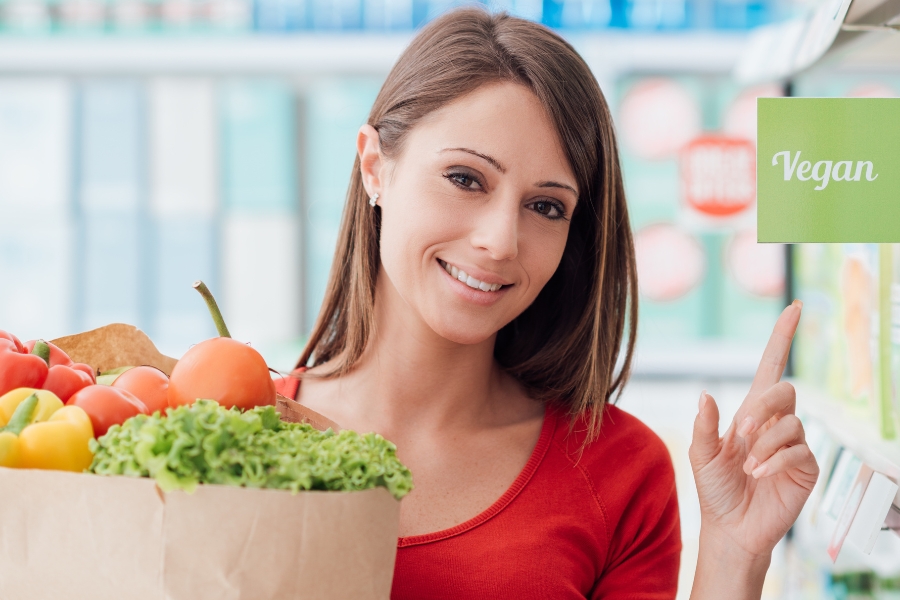
💚 "Happy Plant-Based Shopping & Eating!" 💚

Plant-Based Susy
Plant-Based Nutrition Professional & Weight Loss Coach
Empower Yourself: Embark on a Delicious Fat Loss Adventure

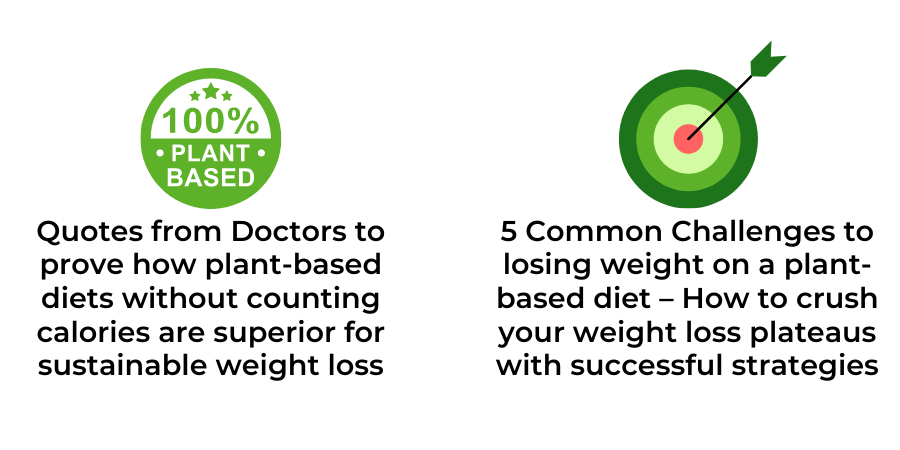
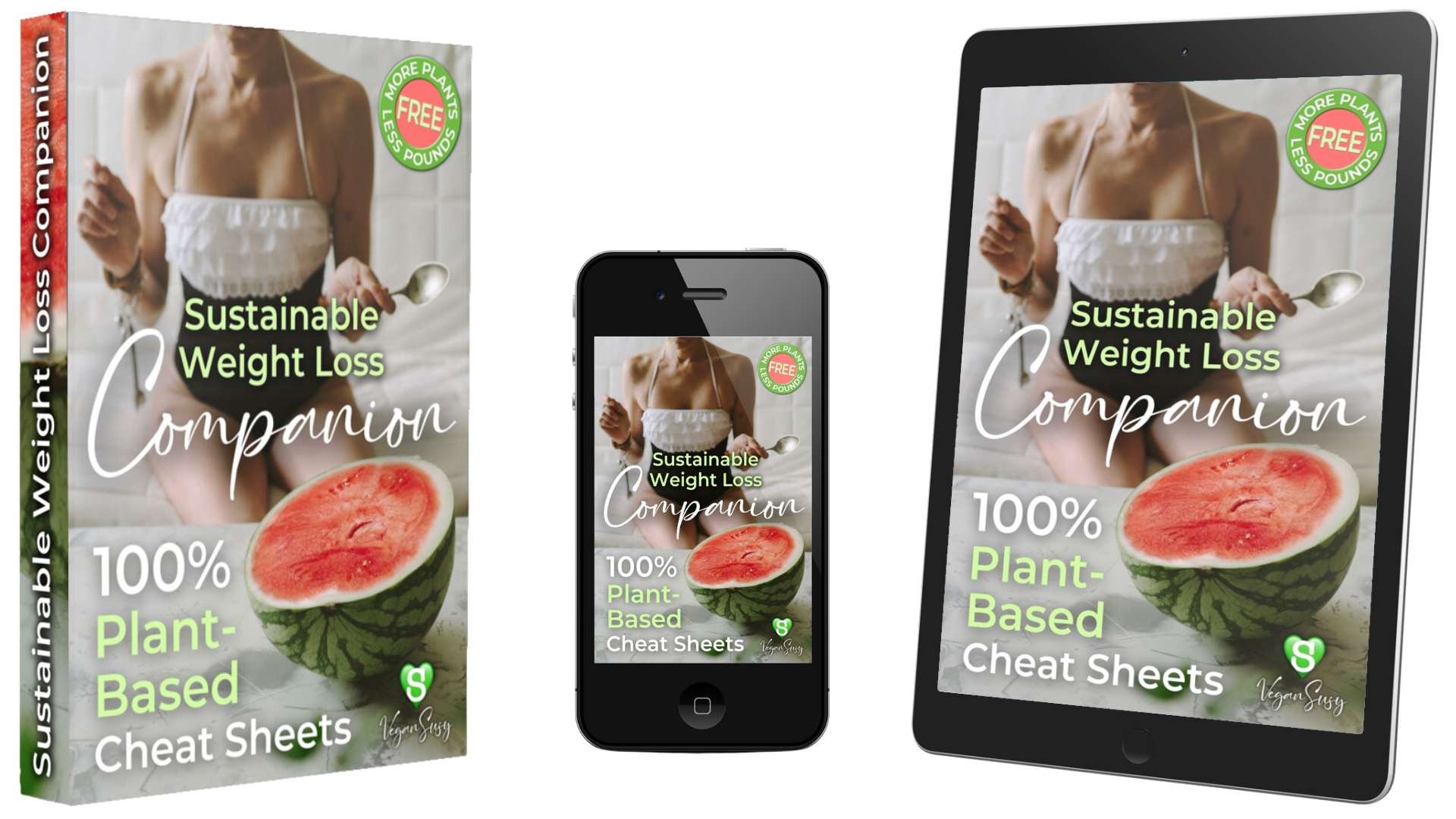
🍉 Get Ready to Jump Start Your Fitness Goals AND DISCOVER A HEALTHIER YOU!
🍉 Let's Make Your Fat Loss & Optimum Health Journey a Delicious Success Story!
🍉 Get The FREE Sustainable Weight Loss Companion eBook and CHEAT SHEETS!
More Free Resources
Unlock Your Transformation Today!
© 2025 VeganSusy Ltd. All Rights Reserved


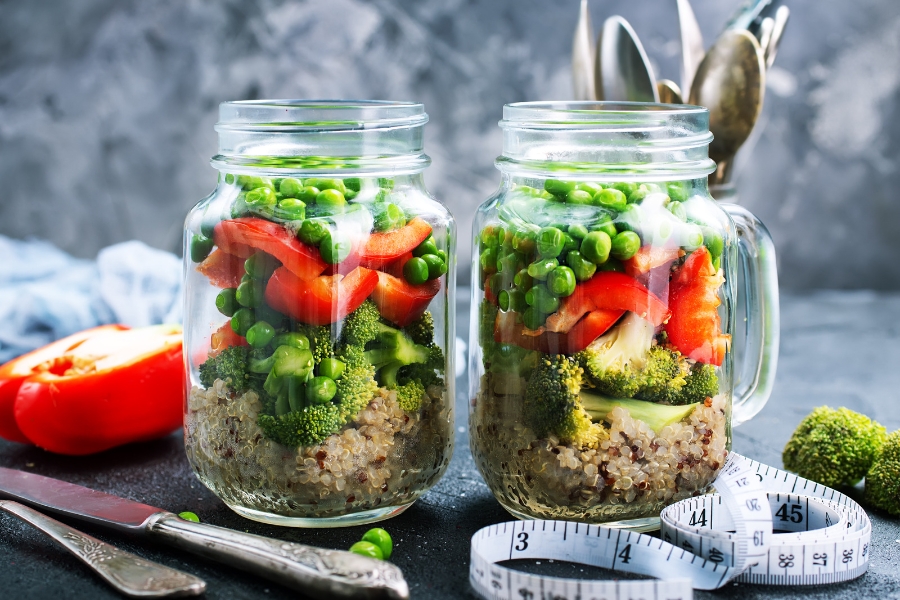
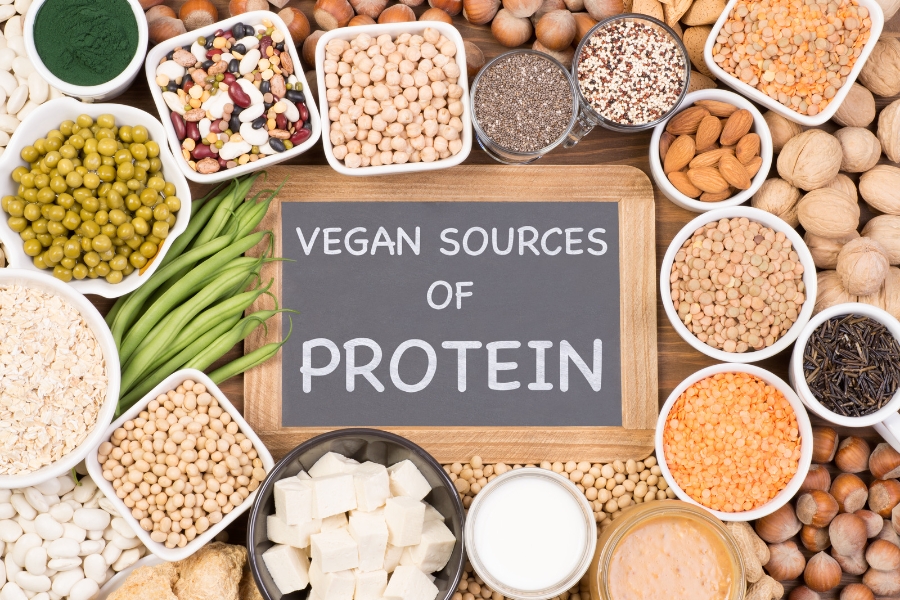

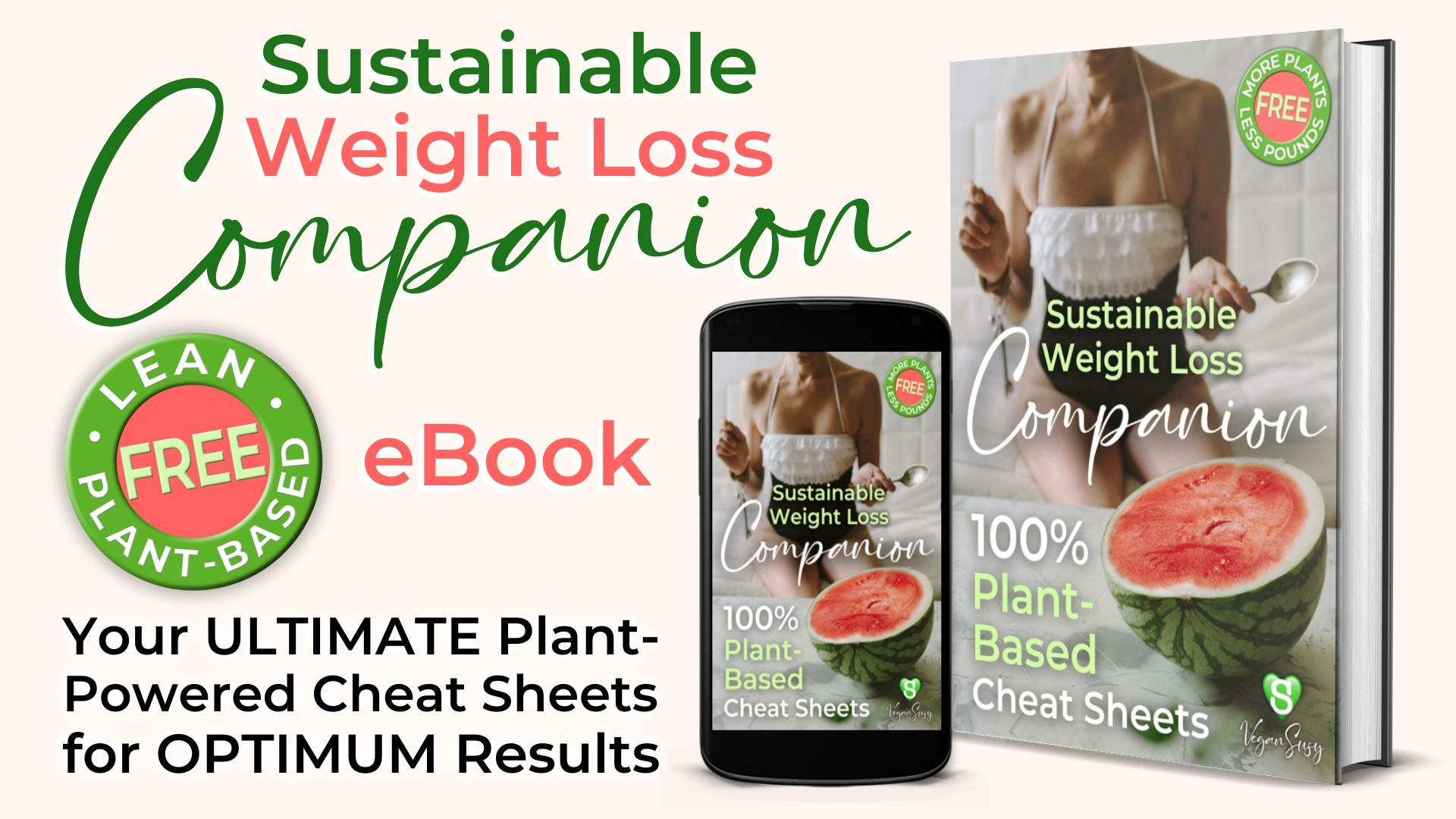





Facebook
Instagram
Youtube
Pinterest